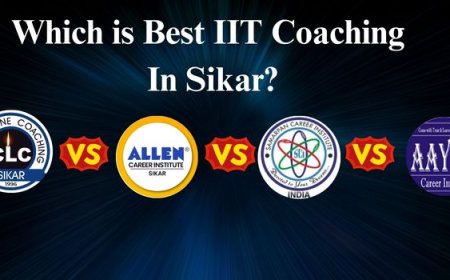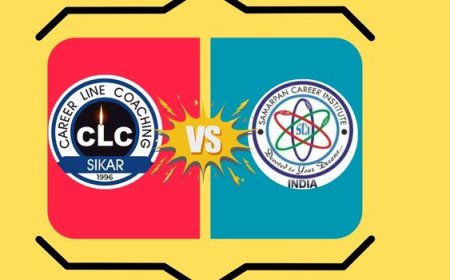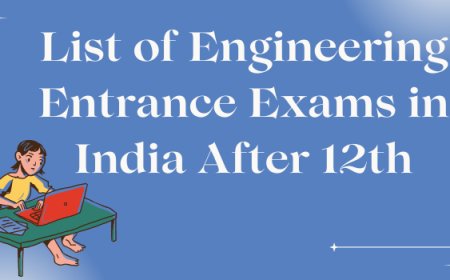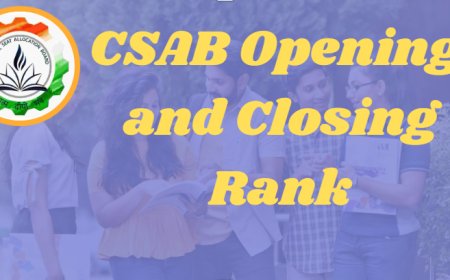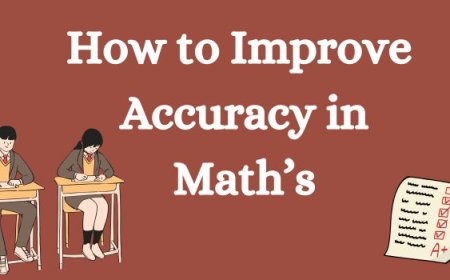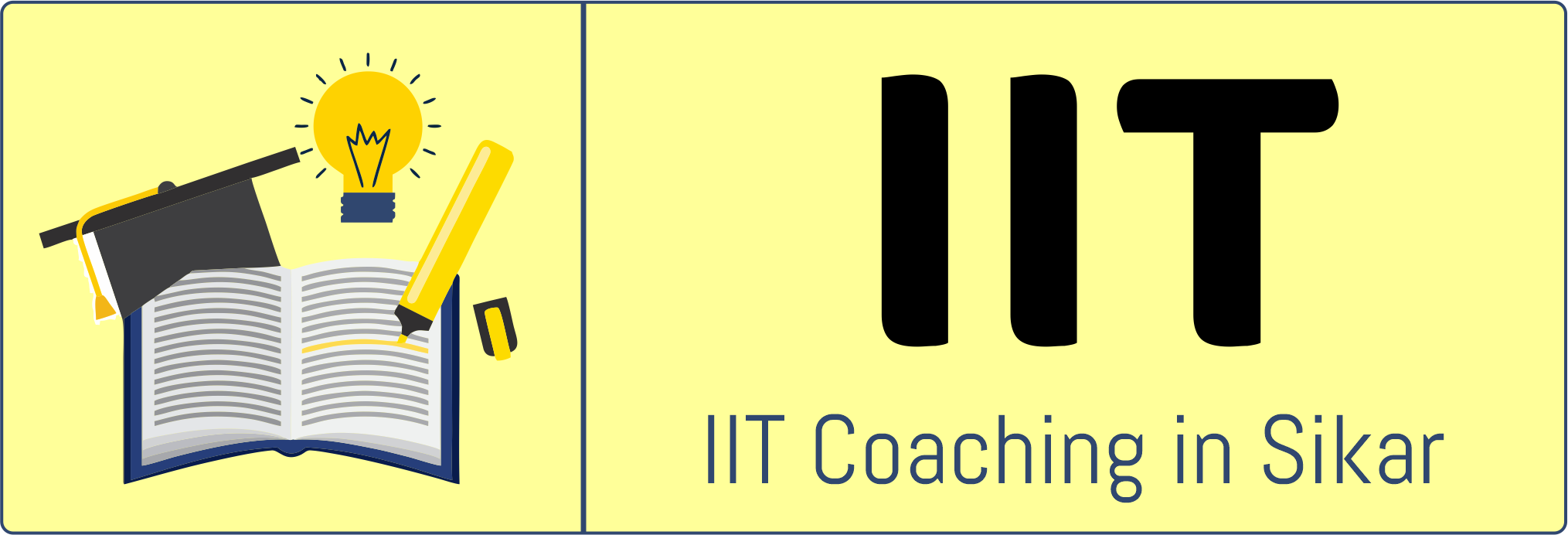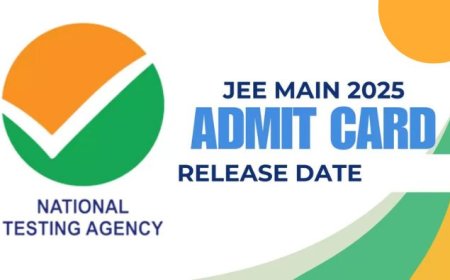JEE Main 2025 April 4 Paper Shift 1 & Shift 2 Analysis: Subject-Wise and Tip
Detailed analysis of JEE Main April 4, 2025 (Shift 1 & 2): Subject-wise difficulty, key topics, weightage & expert tips to boost your score!"
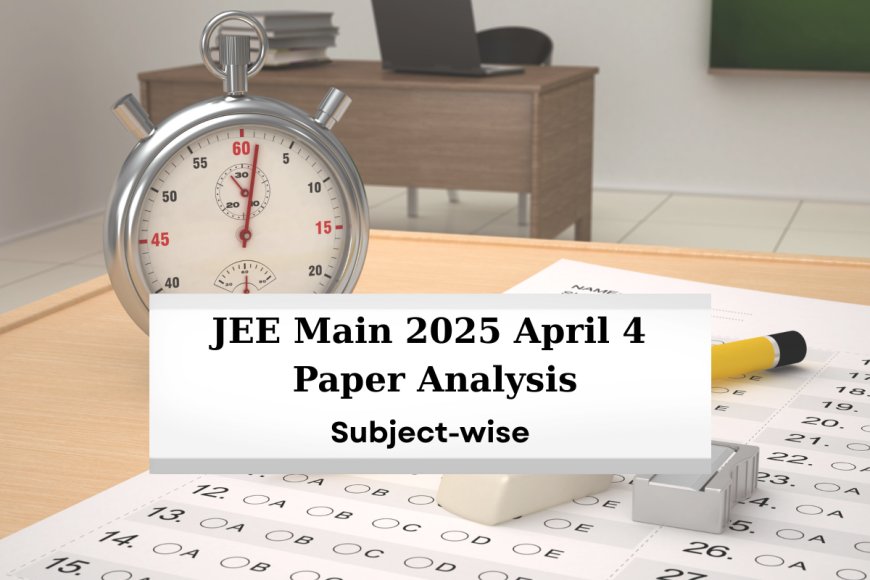
JEE Main 2025 April 4 Paper Analysis: The Joint Entrance Examination (JEE) Main 2025 represents a vital exam for future engineers across India. It grants students access to top engineering institutions among IITs, NITs, IIITs, and all centrally funded technical institutions. Both Shift 1 during morning hours and Shift 2 during afternoon hours occurred on the 4th day of the April session of the examination. Students gained additional understanding about the entire exam format and level of difficulty and identified potential strategic topics through these test sessions. This analysis examines the morning and afternoon sessions from April 4th along with probable question topics that reflect previous year patterns.
JEE Main 2025 April 4 Shift 1 Analysis
The April 4 morning JEE Main 2025 examination took place between 9:00 AM and 12:00 PM. The initial student and subject-expert feedback suggested that Shift 1 contained moderate questions, although specific parts in the exam were somewhat problematic.
Read More: How Many Marks are Required to Clear JEE Mains
Subject-wise Analysis for Shift 1
Physics
Students found the physics exam in Shift 1 to be of moderate challenge. The examination had steady question distribution throughout different subjects, but mechanics received extra attention in the rotational dynamics, electromagnetism, and optics sections. The application of numerical problems in physics took additional time but remained within the expected scope of typical JEE problems. The exam included questions about both modern physics concepts of the photoelectric effect and wave-particle duality and electrostatics material.
Expected topics for physics:
Mechanics (laws of motion, work-energy theorem, rotational dynamics)
Electrostatics (Capacitance, Coulomb Law)
Optics (Ray Optics, diffraction, interference)
Modern Physics (Photoelectric effect, wave-particle duality)
Chemistry
The Shift 1 Chemistry section presented moderate challenges to students. The examination featured a proper distribution between physical chemistry content, inorganic chemistry material, and organic chemistry subject matter. Organic chemistry demanded greater intellectual effort because the course included topics about reaction mechanisms, aldehydes, ketones, and aromatic compounds. The portion for inorganic chemistry contained coordination chemistry and periodic table-based questions.
Expected topics for chemistry:
Students should familiarize themselves with the organic chemistry content of aromatic compounds, together with reaction intermediates and polymers.
Inorganic Chemistry (Coordination chemistry, Transition metals)
Physical Chemistry (Thermodynamics, Chemical equilibrium, Surface chemistry)
Mathematics
The second shift Mathematics test had a comparable format to Shift 1 with questions of medium complexity level. Integration techniques, together with limits, formed the main components of the calculus questions. Among the major sections were Coordinate Geometry with its content on conic sections and straight lines, along with Algebra containing matrices and determinants. The Probability and Vectors parts of the exam tended to challenge certain students because they contained challenging questions that required good time organization skills.
Expected topics for mathematics:
Calculus (Limits, Derivatives, Integration)
Coordinate Geometry (Parabolas, Circles, Lines)
Algebra (Matrices & Determinants, Complex numbers)
Probability
Conclusion and Tips for Future Shifts
Read More: JEE Main 2025 April 3 Exam: Paper Analysis (Shift 1 & Shift 2 ) and Exam Pattern
JEE Main 2025 April 4 Shift 2 Analysis
The JEE Main 2025 Shift 2 examination from 3:00 PM to 6:00 PM presented moderate difficulty levels to students according to general reports while displaying a more balanced subject distribution in comparison to Shift 1.
Subject-wise Analysis for Shift 2
The physics paper of Shift 2 shared a similar balance as Shift 1, yet it placed more emphasis on electromagnetism, while a few numerical problems posed minor challenges. Three essential concepts were featured in the capsular materia, namely capacitance and electromagnetic waves, as well as current electricity. Students favored questions about radioactive decay and the photoelectric effect in the modern physics segment during this section. The paper did not contain questions of excessive difficulty, yet some numerical problems demanded additional work time for proper resolution.
Expected topics for physics:
The electromagnetism branch includes three subtopics: electrostatics, electromagnetic waves, and current electricity.
Mechanics (Work, Energy, Rotational motion)
The atomic models, together with the photoelectric effect, belong to the modern physics category.
Chemistry
The chemistry exam of Shift 2 distributed its questions equally across organic chemistry, inorganic chemistry, and physical chemistry. The inorganic chemistry portion featured examination questions that included material about d-block elements together with transition metals and coordination compounds. The examination covered organic chemistry topics, including reaction intermediates and polymers as well as aromatic compounds. Some intricate questions in thermodynamics and chemical kinetics were present within the physical chemistry section.
Expected topics for chemistry:
The organic chemistry questions in the exam tested candidates on aromatic compounds and reaction intermediates as well as polymers.
Inorganic Chemistry (Coordination chemistry, Transition metals)
Physical Chemistry (Thermodynamics, Chemical equilibrium, Surface chemistry)
Mathematics
The Shift 2 Mathematics section duplicated the Shift 1 section by maintaining challenges at a standard level. Integration and limits appeared in the calculus section but required practical applications to solve them. Two main sections in the second shift math test consisted of coordinate geometry with a focus on conic sections and straight lines and algebra, which covered matrices and determinants. Students found the probability and vectors problems tough since they needed to allocate proper time for specific questions.
Expected topics for mathematics:
Calculus (Limits, Derivatives, Integration)
Probability
Algebra (Matrices & Determinants, Complex numbers)
Read More: JEE Main 2025 April 2 Paper Analysis & Answer Key Download Now
Upcoming JEE Main 2025 exam dates and reporting time:
|
JEE Main 2025 exam dates |
Paper |
Reporting time |
|
April 7th, 2025 |
Paper 1 (B.E./B.Tech) |
Shift 1: 9:00 am to 12:00 pm
Shift 2: 3:00 PM to 6:00 PM |
|
April 8th, 2025 |
Paper 1 (B.E./B.Tech) |
Shift 2: 3:00 pm to 6:00 pm |
|
April 9th, 2025 |
Paper 2A (BArch) and Paper 2B (B.Planning), and Paper 2A |
Shift 1: 9:00 am to 12:00 pm |
The following points should be the main study focus for candidates who need to prepare for upcoming shifts:
Students need to revise major topics between mechanics in physics, together with organic chemistry and calculus.
The most important priority should be mathematical calculations because students need to perform them quickly and precisely.
Students must manage their time to answer all questions since mathematics and physics include many questions during tests.
Old exam papers require practice to learn typical question structures and typical examination trends.
Students will achieve effective performance in upcoming shifts when they maintain consistent preparation habits while focusing on high-importance topics.
Conclusion:
The examination contents for both Shift 1 and Shift 2 at JEE Main 2025 on April 4 maintained an average difficulty level evenly spread across mathematics, physics, and chemistry subjects.
What's Your Reaction?







